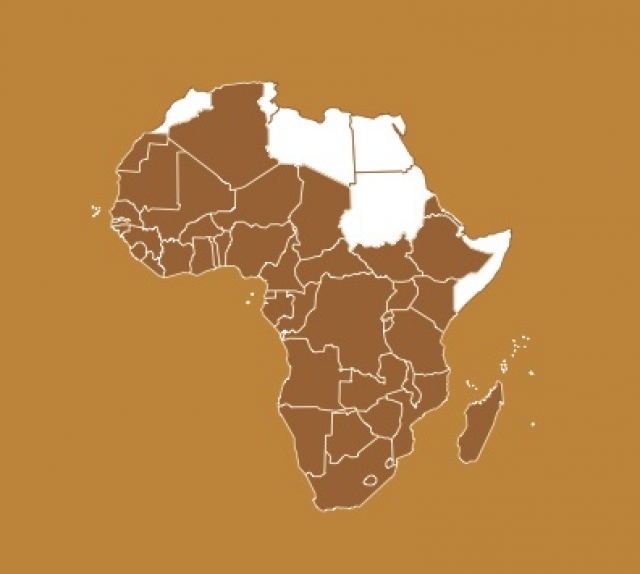Health MDGs and post-2015 Sustainable Development Goals (SDGs)
 Countries in the WHO African Region have made meaningful progress towards attaining the Millennium Development Goals (MDGs) but this is insufficient to reach the MDG targets. Much more needs to be done to sustain the gains so far whilst pursuing the post-2015 Sustainable Development Goals (SDGs).
Countries in the WHO African Region have made meaningful progress towards attaining the Millennium Development Goals (MDGs) but this is insufficient to reach the MDG targets. Much more needs to be done to sustain the gains so far whilst pursuing the post-2015 Sustainable Development Goals (SDGs).
Three of the eight MDGs set by the world leaders in their UN Millennium Declaration were directly related to health. These include Goal 4: Reduce child mortality, Goal 5: Improve maternal health, and Goal 6: Combat HIV/AIDS, malaria and other diseases. Most other MDGs relate to health, in particular Goal 1: Eradicate extreme poverty and hunger, and Goal 7: Ensure environmental sustainability.
The World Health Organization provides leadership, engages partners and offers technical support to build sustainable institutional capacity thus contributing to the progress that has been made so far in the Region. Below is a quick overview of progress made for each of the MDGs:
MDG 4A – The under-five mortality rate in countries varies between 14 and 157 per 1 000 live births, with 10 countries having achieved the target of reducing under-five mortality by two thirds between 1990 and 2015. In addition, 15 countries reduced their under-five mortality rate by at least 50%, while another 15 countries reduced their under-five mortality rate by at least 30%.
The under-five mortality rate has fallen by 54% from 177 deaths per 1000 live births in 1990 to 81 in 2015
Neonatal mortality rate declined by 38% from 45 deaths per 1 000 live births in 1990 to 28 in 2015

[Fig: MDG-4-5]
MDG 5A – Maternal mortality varied between 53 and 1 100 per 100 000 live births, with four countries achieving the target of reducing maternal mortality ratio by three quarters.
MDG 5B – No country has achieved the target of universal access to reproductive health by 2015 (100% coverage of at least one antenatal care visit).
MDG 6A – 37 of 47 countries in the Region have progressed and/or achieved the target of lowering the HIV/AIDS incidence, with a 40% reduction in the incidence of HIV in the Region between 2001 and 2014.
MDG 6B – Many countries have made substantial progress in providing access to anti-retroviral treatment (ART) in the region, although the target of universal coverage is not yet achieved in any country .
By December 2014, 10.7 million people living with HIV/AIDS were receiving antiretroviral therapy (ART), representing an increase of more than 100% from 5 074 000 since 2010.
Ten (10) countries registered ART coverage of more than 50% in adults.
MDG 6C – 12 countries reached the target of lowering malaria mortality. Between 2000 and 2013, the estimated number of cases per 1 000 persons at risk of malaria declined by 34% and malaria mortality rates declined by 54% in the WHO African Region.

[Fig: MDG-6]
MDG 6C – Tuberculosis incidence which peaked at 337 per 100 000 people at risk in 2000 has declined to 280 per 100 000 in 2013 in the Region with 19 countries having achieved the related MDG target.
MDG 1C – Three countries reached the MDG target on malnutrition. The percentage of underweight children varied between 11 and 39.
MDG 7C – 13 countries reached the MDG target on safe water and one country reached the target on basic sanitation. Access to improved sources for drinking water was between 46 and 99%. Access to improved sanitation was between 9 and 95%.

[Fig: MDG-1-7]
The unfinished work of the MDGs and the SDGs
While substantial progress has been achieved on the MDGs, there have been significant changes in health patterns since its adoption. These include increased life expectancy, emergence of new global health security threats and substantial shift in the major causes of death and illness globally from communicable to noncommunicable diseases. There is also increased global solidarity, partnerships and investment in health development, which while welcome, has brought on challenges in coordinating the various players especially at country level. The MDGs will be succeeded by the Sustainable Development Goals (SDGs). Health is covered under SDG-3: “ensure healthy lives and promote well-being for all at all age” and has nine proposed targets:
- Three related to the unfinished business of the health-related MDGs
- Three on noncommunicable diseases and injuries
- One on universal access to sexual and reproductive health care services
- One on Universal Health Coverage
- One on environmental pollution and contamination
SDGs and the WHO Regional Office for Africa
Supporting countries to achieve the health related MDGs and sustaining focus on health-related SDGs post-2015 is one of the five strategic priorities of the WHO Regional Office for Africa.
Tasks ahead for countries
- Improve financing of the health sector
- Strengthen health systems to achieve goals
- Strengthen health information systems for improved monitoring of the SDGs
- Develop a consensus on the key SDG indicators
- Work with non-health sectors in planning and prioritizing SDGs targets
- Maintain the dialogue with health development partners
Actions proposed for WHO and development partners
- Support countries in articulating their approach to health in the post-2015 development agenda,
- Increase investment in implementation of the SDGs
- Improve alignment of resources to country priorities
While the single health goal (SDG-3) captures the key aspects of achieving good health, health is closely linked to many of the other proposed goals. For example, health is a contributor to, and a beneficiary of, poverty reduction, hunger relief and nutrition, safer cities, lower inequality, sustainable consumption, affordable and clean energy, the management of toxic chemicals, clean water and sanitation, efforts to combat climate change, and the conservation of aquatic and terrestrial ecosystems.


